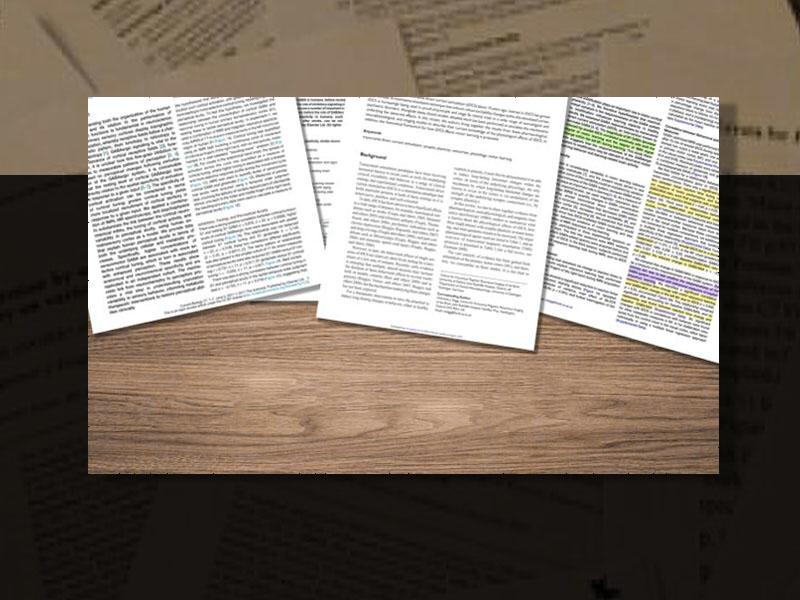“The measure of greatness in a scientific idea is the extent to which it stimulates thought and opens up new lines of research.”
-Paul Dirac (Formulated the Dirac Equation)
Often while developing newer technologies and innovating futuristic ideas, we overlook the key stepping stones laid by the greats and their foundation. A must tool in keeping a track of one’s technical diligence is publishing a paper or filing for a patent. Addressing the why becomes necessary in clearing the fog surrounding the whole process of publishing research papers. The whats and hows are followed thereafter.
The Whys
➔ Newer ideas, arguments and claims can be shared with the community
➔ A well documented proof of your technical work, innovation or discovery that is validated by peers
➔ Improves chances of getting Higher Education from reputed Institutes(India & Abroad)
➔ Enhances resume and opens newer niches for research
➔ Lets you dabble in scientific writing, explore your domain and understand your technical expertise
The Whats
The difference between a Journal & a Conference paper: A journal is a periodical publication that focuses on a certain discipline. It contains a number of peer-reviewed papers that are generally considered credible and are very good sources to cite from.
While, a conference is a place where scholars, researchers, professors, and academics gather to discuss research and developments in a certain field. Followed by a visual(poster or verbal) presentation. Conference papers are usually short and concise with time stringents, along with quick acceptances and rejections.
Whereas Journals allow the writer to go back and forth with edits, if found quality work being done. Time flexibility is another add-on with Journal Papers.
The Hows
Selecting a topic, project, research work to publish is as crucial a first step as the last. The novelty and uniqueness of said topic weighs in during the acceptance/rejection of a paper. This can be determined by a Literature review which entails all the existing work done by researchers, the merits and drawbacks of a particular method, the improvisations carried out, figures and stats needed for further comparison. This also facilitates in coming up with specific research objectives. Research objectives should try to attain better results compared to previous outcomes. Or introduce newer methodology.
Once a topic is finalized, a broader plan of work should be devised in order to achieve said research objectives. Distinct approaches like trial and error, conventional techniques or a combination of several such methods can give desired output. Keeping a track of mistakes and errors too can benefit in assessing the shortcomings of your work. Often silly mistakes tend to get amplified if not rectified in due time. All this hustle will definitely yield good results. These results need to be compared with other research work and thus you can conclude the novelty or uniqueness of your work.
With all the groundwork being laid now, it is apt time to start writing a research paper. The standard format for IEEE papers is available on IEEE website to refer to. Similarly, different journals and conferences have their own formats which can be found easily. Identifying journals which adhere to your requirements and domain is essential and parallel to your focus and scope leads in better acceptance rate. Select a good number of journals to send your manuscript in case there’s rejection(s). It also keeps you from duplicating the entire process. Ensure your text is formatted, pay special attention to bibliography, text formatting and citation style, according to submission guidelines. Keep in mind, the writing ought to be clear, concise and appropriate technical jargons be properly explained.
Depending on the conference, some ask for the entire paper, some for abstract and some with an additional cover letter. The reviewers decide the acceptance of paper on the quality of the work. Once selected, a registration fee and registration for the conference is the next step. Presentation at conferences can include poster, verbal or powerpoint presentations. While this may seem a linear procedure, it does have learning curves at all tangents. Rejection, comments, edits are part and parcel of the publishing world. While all this may seem daunting, the finished product is worth it.
The Whens
When is the right time to publish a paper? The answer is now. It does not matter if you are an undergrad, a postgrad or a research fellow. What matters is the quality and innovativeness of your work. India’s new education policies are paving the path towards research and development after decades of miniscule attention. Every research work will amount for greater good in the near future. So, what are you waiting for? Put on your researching caps!
‘Research is all about continuous, long term efforts, put day in and day out to develop new ideas and innovate existing ones. Knowing that your work will someday make a real difference makes all the hard work worth it.’
-Anuradha Patil(MTech by Research, VLSI Design, ‘20)
https://ieeexplore.ieee.org/document/9029106
‘Literature review is a necessity before beginning research. It helps in defining the objective, scope and best methodology of our research. Well defined objective is research half done. Writing a convincing reply to the queries of the reviewers is a challenging task that needs diligent efforts. The satisfaction is unparalleled when the paper gets published.’
-Lakshmi Kittur(MTech by Research, CS-IS, ‘21)
https://link.springer.com/chapter/10.1007/978-981-15-7961-5_12
Special credits: Anuradha Patil(MTech by Research, VLSI Design, ‘20) & Lakshmi Kittur(MTech by Research, CS-IS, ‘21)


